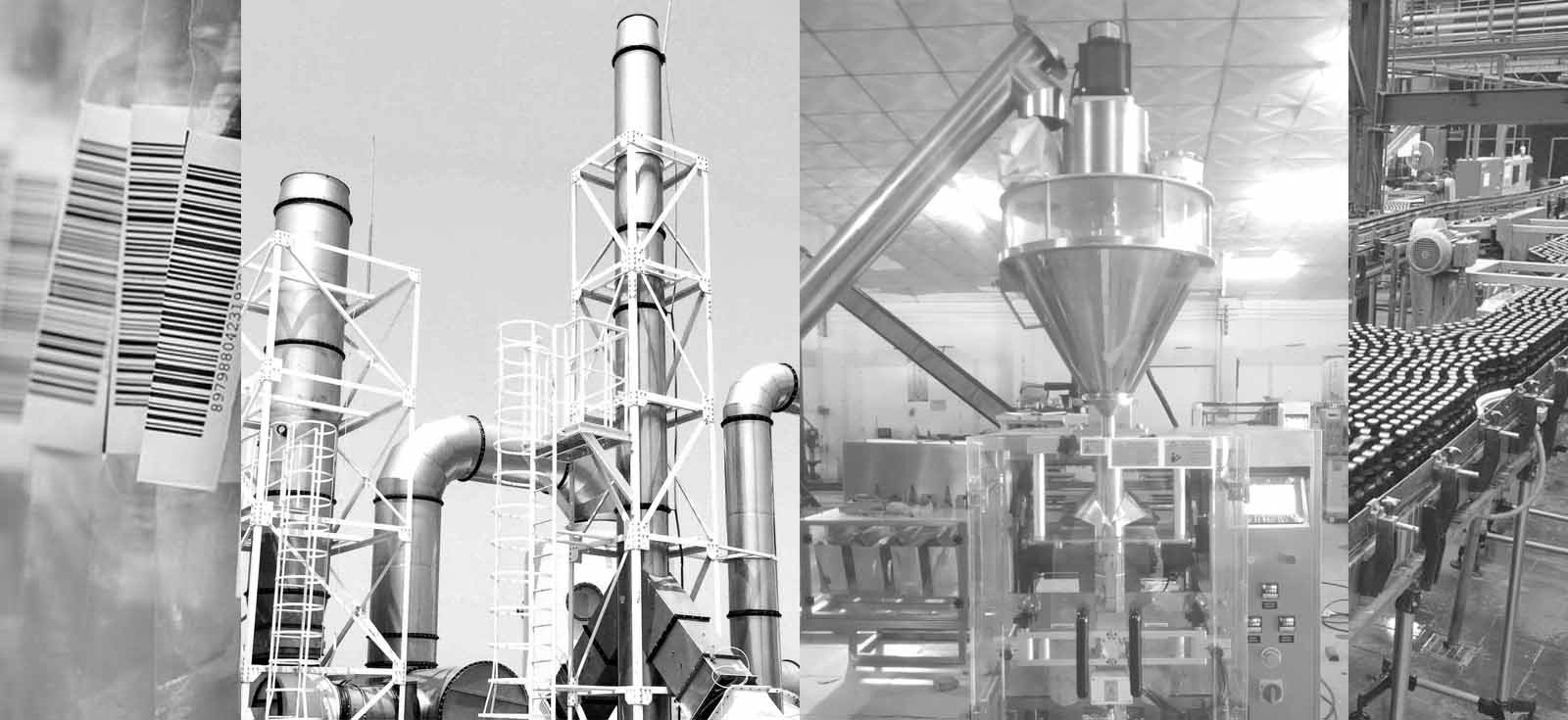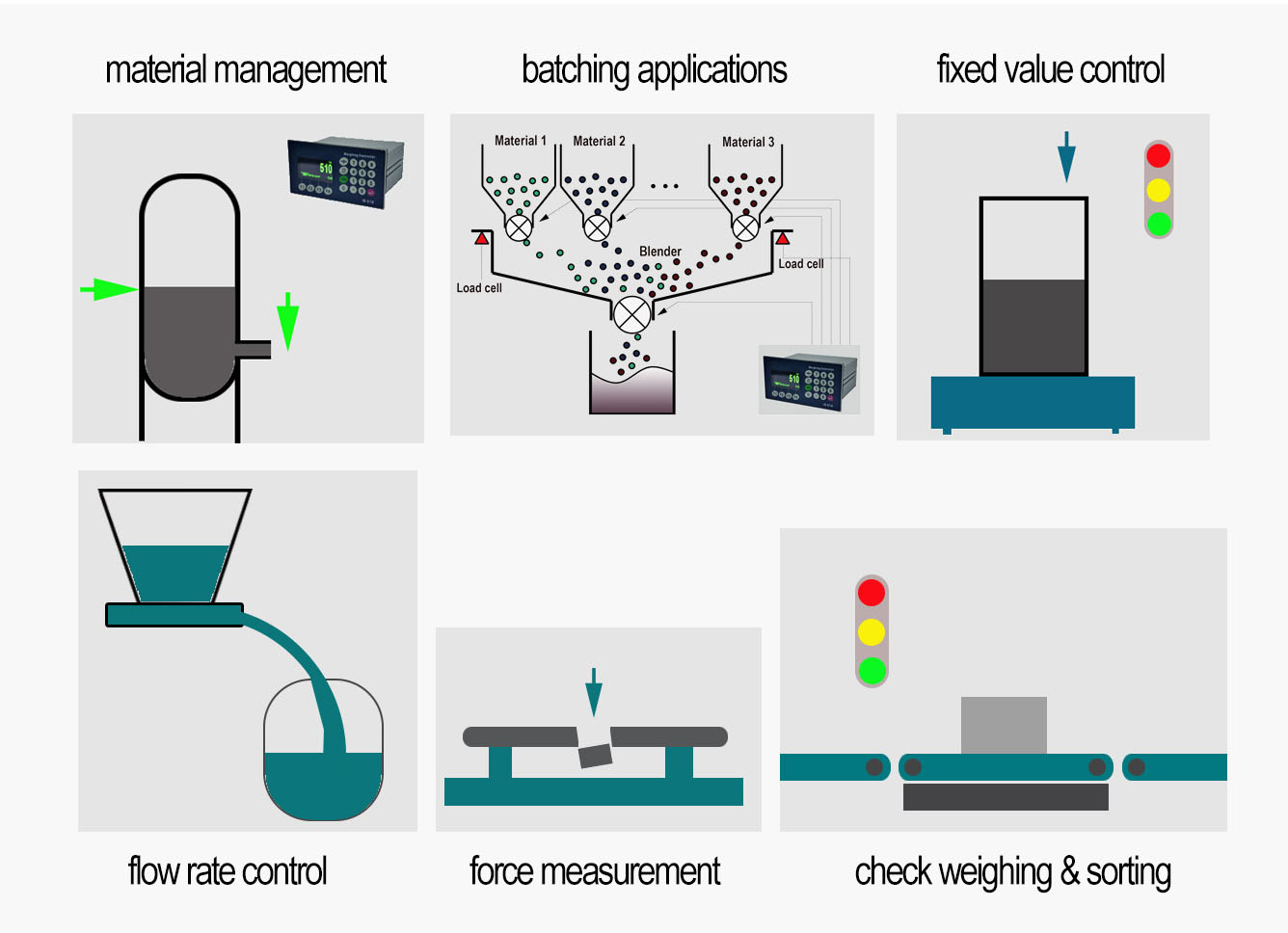Typical Weighing Process Control Applications
Overview of Weighing Process Control
Purchasing raw materials,sending materials to the factory,managing storage,producing final products,etc. process control can be applied in all of above processes. Weighing process control is able to supply weighing solutions,and provide weighing-based services for manufacturing as well as detection procedure.
Industrial process control refers to the automatic control in which parameters such as temperature,pressure,flow,level,composition, and so on are considered as controlled variables. Process weighing,as the name suggests,means the auto-control of taking weight as the controlled variable. The major applications of process weighing contain the collection of weighing data,the transmission of weighing data,and the control signal triggered by the data weight-based. Comparing to transaction weighing,the applications of process weighing pay more attention to production process and process control combined with weighing purpose.
Range of Applications

Process control products include weighing module, process weighing controller (such as ID510,ID511,ID551PN,etc.) and some load cells. They can be used in varieties of industries,such as pharmaceutical chemicals,daily chemicals,fine chemicals,special chemicals,food,basic materials,building materials,petrochemicals,metallurgy,etc. the range almost covers all major industries. Furthermore,each major industry also involves many sub-industries.
Examples:
The sub-industries of fine chemicals contain pesticides,resins,coatings,inks,polyurethanes,synthetic leather,etc.
* For daily chemicals,the sub-industries include cleansing products,toothpaste,washing powder,flavors & fragrances,etc.
* And adhesives are belong to special chemicals.
* Food’s sub-industries,there are milk powder,juice,chocolate and food additives.
* Building materials involve glass,cement,fiberglass,and so on.
Six Typical Applications of Process Weighing Control
There are six core applications for process weighing: material management,batching,fixed value control,flow control,force measurement and dynamic application. The weighing requirements of customers are not exactly the same according to their different applications.

1. Material management application
* Measure the current status of the material. Install weighing modules under the legs of the tank,that can show the actual inventory situation by acquiring weight information,and transmit the data to the control system or production management system as well,thereby system can arrange inventory replenishment in time.
* The use of weighing measurement technology comprises weighing data sampling and transmission,material level control,alarm and pre-maintenance functions,resuming function from breakpoint. For clients the reliability of running system is equally as important as system accuracy.
* In the section of data collection and transmission,load cells with good quality,weighing module with high accuracy as well as good reliability,weighing controller with kinds of field-bus communication can improve the performance greatly.
* Material level detection and data review are also significant. Some customers focus on whether the tank is short of material or whether the material overflows,therefore material level detection process is necessary. The purpose is to measure the quantity of material in the tank,alarm while material level exceeds allowable range,determine the time switching to another storage tank. For data review,it can be used to check if the package’s number on the packaging line matches with the discharge quantity of tank,in order to find and control the possible existing loss point. Level detection pays more attention to reliability while data review focuses on accuracy.
2. Batching application
Kinds of raw materials are put into mixing tank in accordance with the proportion determined by the recipe,via a series of reaction processes such as stirring,heating and pressurization and so on,to form a new material at last.
Because the accurate ratio of material weight is essential request for batching,as a result weighing section becomes a crucial element.
There are two weighing modes which are often used in batching: weighing via high level metering tank or mixing tank. We should choose the suitable batching mode based on the installation status on site as well as batching accuracy requested by customer. Therefore customer’s requirements ought to be checked carefully at first,involving weighing accuracy,stable data,how to control weighing process,etc. Depending on the practical needs, then choose the most suitable batching mode for the customer. However there’s no doubt that accuracy request largely determines the batching mode, and the stable weighing data plays an extreme important role during batching process as well.
3. Fixed value control application
Fixed value control can combine flexibly with other applications, thus, a series of combinations related to fixed value control can be widely used in different production processes.
Fox example,fixed value addition,fixed value packaging or fixed value filling which is the process of delivering material from a large container into small containers such as barrels,bags,etc. Fixed value packaging can be applied to the solid material while filling application is adapted to liquid material. If the fixed value control function plus the speed demand,this combination will be the packaging scale or filling scale. Comparing to packaging scale and filling scale, the process control application has less requirement with the speed.
The fixed value addition can be used in quantitative addition of liquid or powder in production processes,like pure water.
Furthermore,weighing controller can control valve switch directly,the function is similar to the micro PLC.
For product packing or filling purpose,weighing data collection method is multiple and flexible. A bench scale or load cells can be integrated on the conveyor belt,or a standard floor scale can be placed under the tank.
Here are two ways for target control: one is process weighing controller plus PLC,another way is to choose the weighing controller with field pack software function. The biggest difference from system products is whether users have the need for rapid growth and packaging or not.
4. Flow control process
Flow control contains zero-gravity feeding and dosing. It requires uniform feeding per unit time,It can be regarded as a kind of control for flow or flow rate. The weighing principle is that weighing controller sets the expected flow rate,then compares feeding weight collected per unit time with previous expected value. If the practical value is larger than expected value,adjust the feed inverter to make the speed slow down; Otherwise,adjust the feed inverter to make the speed more quick until the flow rate can satisfy our expectation.
picture
5. Force measuring refers to tensile testing and press testing
Weighing controller features the function of peak locking,it can help us complete maximum tension test when collecting the limit value of pressure or tensile force that detected object are bearable.
6. Check-weighing and sorting applications
High speed dynamic weighing controller with check weighing function can help customers achieve checkweighing and sorting purpose. It is mainly applied in on site renovation project and some equipments related to check weighing.
As customers care about the whole system,not just a specific product. Therefore we should pay more attention to above applications,which can closely link products and markets together.